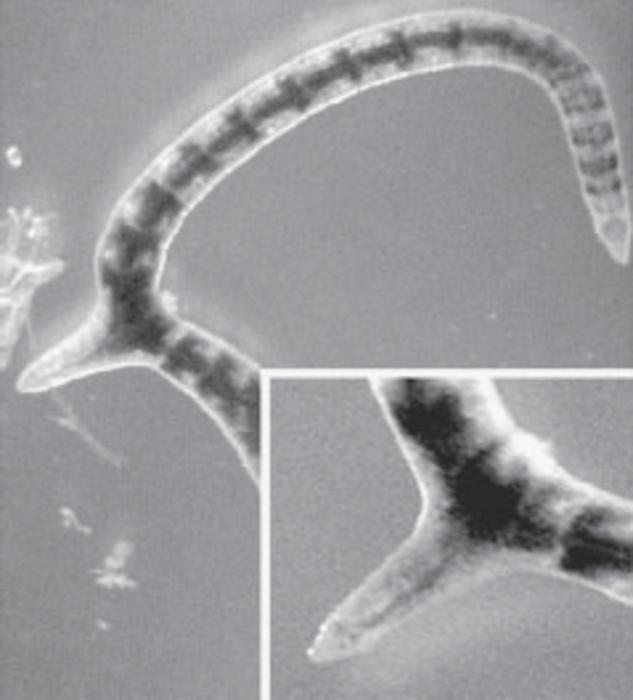
Effects of Nerve Injury and Segmental Regeneration on the Cellular Correlates of Neural Morphallaxis
We studied how worms regenerate body parts and the effect of growing a second head on the worm's nervous system.
 download preprint
download preprint
BibTeX
@article{Martinez:2008:EH,
author = {Veronica Martinez and
Josiah Manson and
Mark Zoran},
title = {Effects of Nerve Injury and Segmental Regeneration
on the Cellular Correlates of Neural Morphallaxis},
journal = {Journal of Experimental Zoology (Mol Dev Evol)},
volume = {310},
number = {B},
year = {2008},
pages = {520--533},
}
Abstract
Functional recovery of neural networks after injury requires a series of signaling events similar to the embryonic processes that governed initial network construction. Neural morphallaxis, a form of nervous system regeneration, involves reorganization of adult neural connectivity patterns. Neural morphallaxis in the worm, Lumbriculus variegatus, occurs during asexual reproduction and segmental regeneration, as body fragments acquire new positional identities along the anterior–posterior axis. Ectopic head (EH) formation, induced by ventral nerve cord lesion, generated morphallactic plasticity including the reorganization of interneuronal sensory fields and the induction of a molecular marker of neural morphallaxis. Morphallactic changes occurred only in segments posterior to an EH. Neither EH formation, nor neural morphallaxis was observed after dorsal body lesions, indicating a role for nerve cord injury in morphallaxis induction. Furthermore, a hierarchical system of neurobehavioral control was observed, where anterior heads were dominant and an EH controlled body movements only in the absence of the anterior head. Both suppression of segmental regeneration and blockade of asexual fission, after treatment with boric acid, disrupted the maintenance of neural morphallaxis, but did not block its induction. Therefore, segmental regeneration (i.e., epimorphosis) may not be required for the induction of morphallactic remodeling of neural networks. However, on-going epimorphosis appears necessary for the longterm consolidation of cellular and molecular mechanisms underlying the morphallaxis of neural circuitry.
License
The images, executables, and code supplied are from the web page http://josiahmanson.com. These materials are free to use for non-commercial purposes. Any works that use materials from this web page should acknowledge Josiah Manson and the paper Effects of Nerve Injury and Segmental Regeneration on the Cellular Correlates of Neural Morphallaxis. For commercial use, please contact Josiah Manson (josiahmanson@gmail.com).